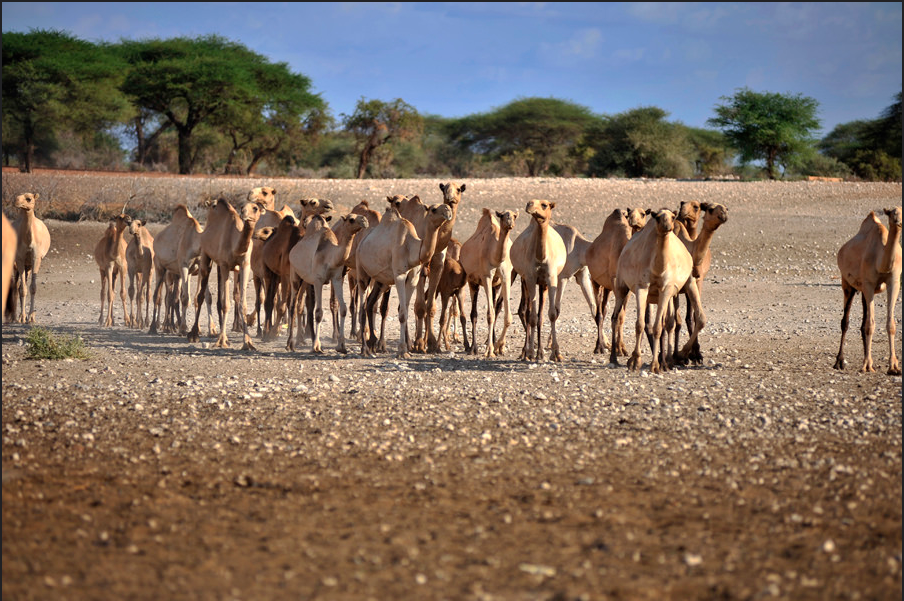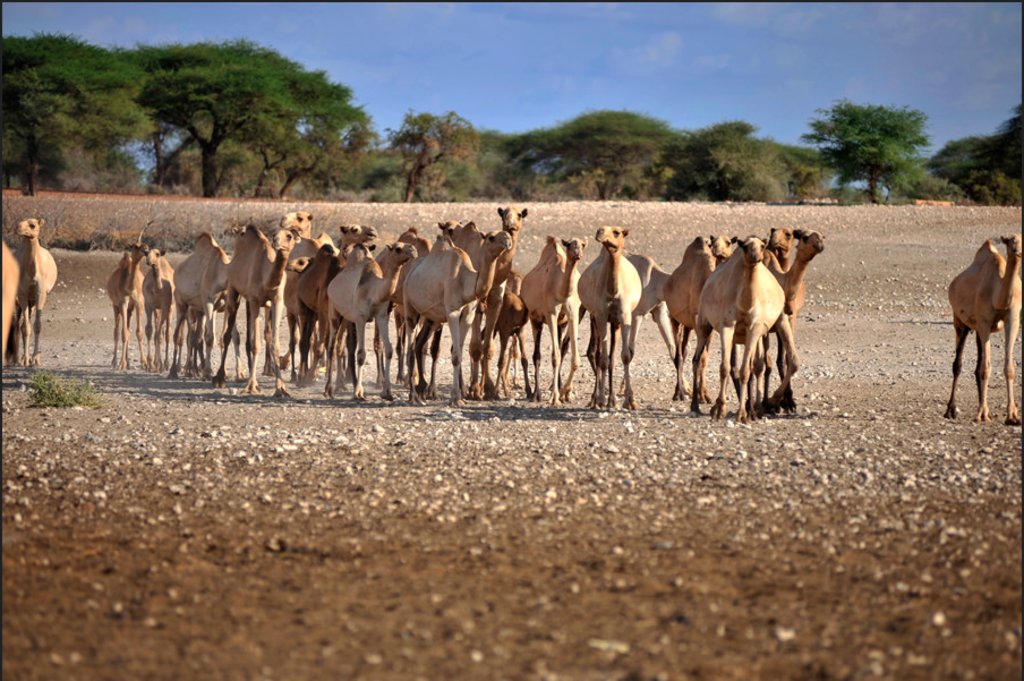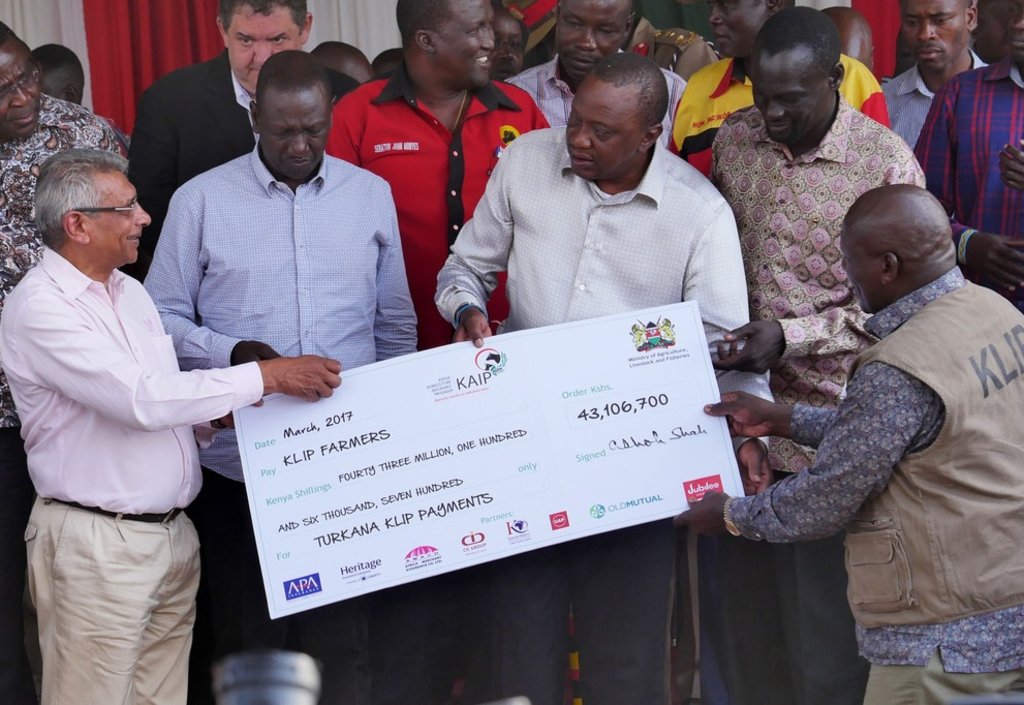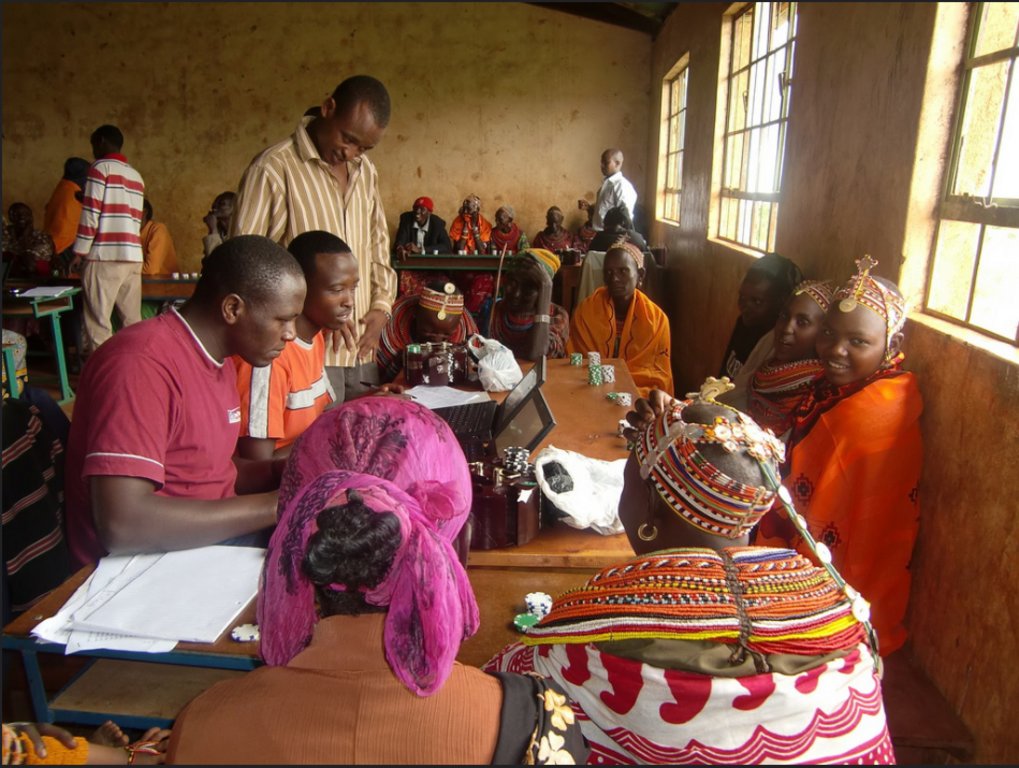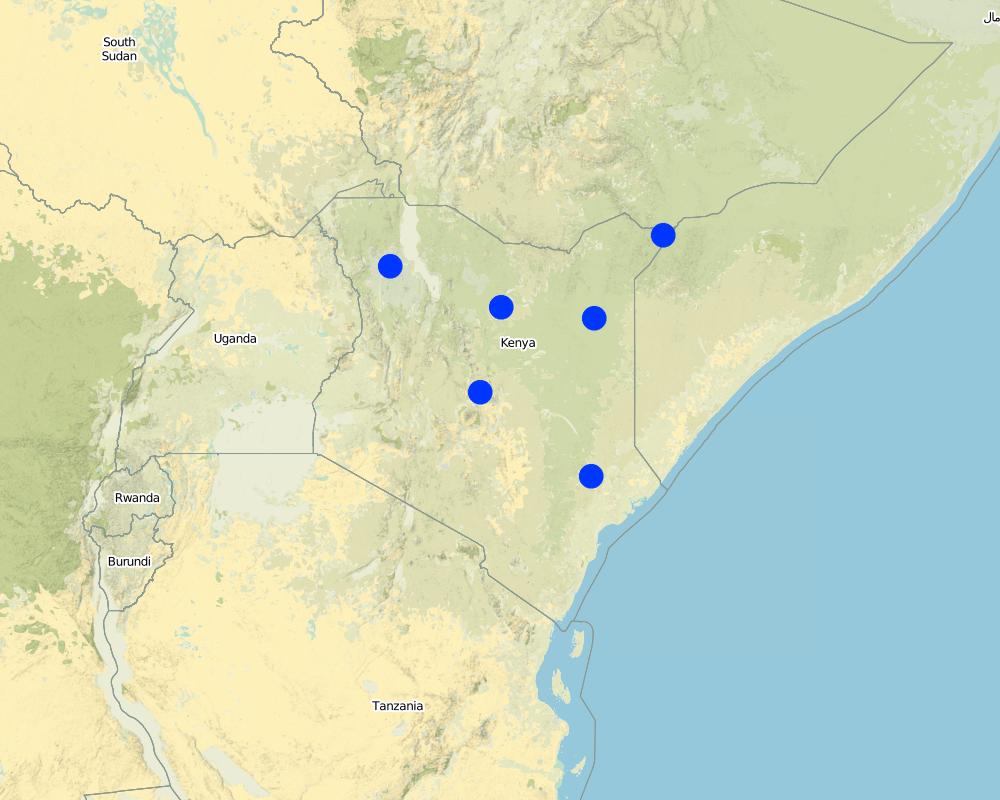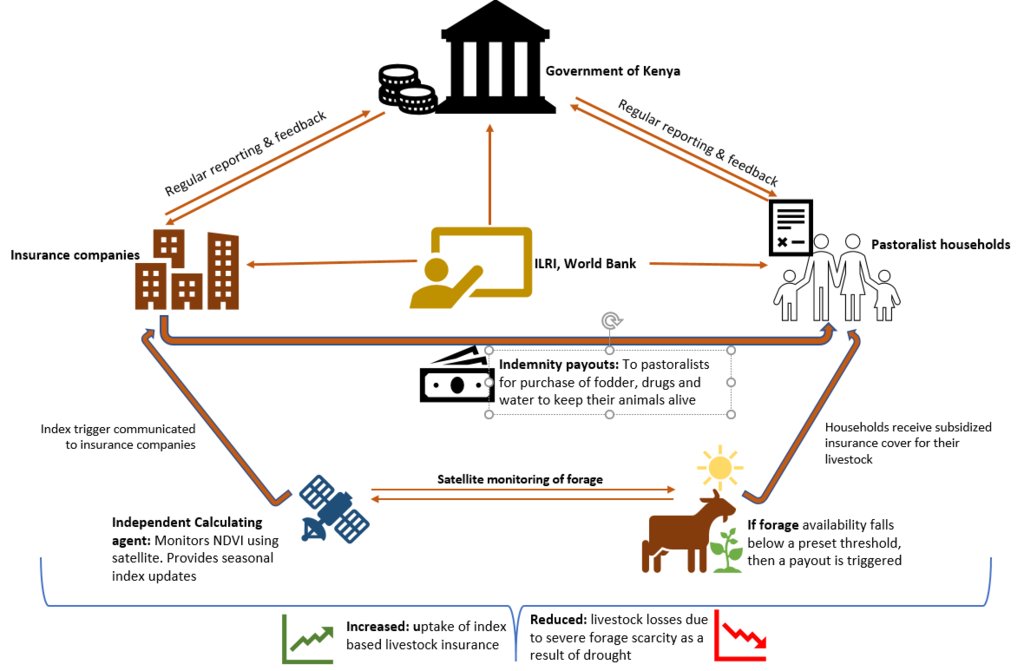Kenya Livestock Insurance Program (KLIP) [Кени]
- Шинийг нээх:
- Шинэчлэх:
- Мэдээлэл цуглуулсан: Duncan Collins Khalai
- Редактор: –
- Хянагч: Rima Mekdaschi Studer
KLIP
approaches_3283 - Кени
- Бүрэн хураангуйг PDF-ээр
- Бүрэн хураангуйг PDF-ээр хэвлэх
- Хөтөч дэх бүрэн хураангуй
- Бүрэн хураангуй (форматгүй)
- Kenya Livestock Insurance Program (KLIP): 02 11-р сар 2021 (public)
- Kenya Livestock Insurance Program (KLIP): 12 7-р сар 2018 (inactive)
- Kenya Livestock Insurance Program (KLIP): 03 9-р сар 2018 (inactive)
- Kenya Livestock Insurance Program (KLIP): 07 6-р сар 2018 (inactive)
- Kenya Livestock Insurance Program (KLIP): 23 5-р сар 2018 (inactive)
- Kenya Livestock Insurance Program (KLIP): 13 5-р сар 2018 (inactive)
- Kenya Livestock Insurance Program (KLIP): 27 2-р сар 2018 (inactive)
- Kenya Livestock Insurance Program (KLIP): 26 2-р сар 2018 (inactive)
- Kenya Livestock Insurance Program (KLIP): 14 1-р сар 2018 (inactive)
Бүлгүүдийг үзэх
Бүгдийг харуулах Бүгдийг хаах1. Ерөнхий мэдээлэл
1.2 Арга барилыг баримтжуулах болон үнэлгээ хийхэд оролцсон хүн эсвэл байгууллагын холбоо барих хаяг
Арга барилыг баримтжуулах/үнэлэх ажилд дэмжлэг үзүүлсэн төслийн нэр (шаардлагатай бол)
Index Based Livestock Insurance, Kenya (IBLI)Арга барилыг баримтжуулах/үнэлэх ажилд дэмжлэг үзүүлсэн байгууллага(ууд)-ын нэр (шаардлагатай бол)
International Livestock Research Institute (ILRI) - Кени1.3 WOCAT-аар баримтжуулсан өгөгдлийг ашиглахтай холбоотой нөхцөл
Мэдээллийг хэзээ (газар дээр нь) цуглуулсан бэ?
23/11/2017
Эмхэтгэгч болон гол мэдээлэгч хүн(хүмүүс) WOCAT аргачлалаар баримтжуулсан мэдээллийг ашиглахтай холбоотой нөхцлийг хүлээн зөвшөөрсөн.
Тийм
2. ГТМ Арга барилын тодорхойлолт
2.1 Арга барилын товч тодорхойлолт
The Government of Kenya (GoK) is implementing the Kenya Livestock Insurance Program (KLIP), with the overall objective of reducing the risk of livestock mortality emanating from drought and to build the resilience of vulnerable pastoralists for enhanced and sustainable food security. Currently under this program, GoK pays insurance premiums for a maximum of 5 Tropical Livestock Units (TLU), (whereby 1 TLU is approximately equivalent to 1 cow), on behalf of selected households that are considered vulnerable (i.e. own less that 5 TLUs). In case of severe forage scarcity as a result of drought, these particular households receive payouts to enable them purchase fodder, veterinary drugs and water to keep their animals alive. The expected impact on pastoralists’ livelihoods is protected assets and improved recovery from the drought shocks leading to better livelihoods. At national level reduced expenditure on humanitarian emergencies during the severe droughts and a sustained contribution of the livestock sub sector to the national economy is expected. As a Sustainable Land Management (SLM) solution, KLIP approach can contribute to reduced pressure on grazing lands by providing payouts which are used by pastoralists to purchase animal feeds from outside the KLIP counties during drought periods, leading to reduced land degradation.
2.2 Арга барилын дэлгэрэнгүй тодорхойлолт
Арга барилын дэлгэрэнгүй тодорхойлолт :
KLIP is a GoK funded drought insurance program for vulnerable pastoralists located in the Arid and Semi Arid Lands (ASALs) of Kenya. KLIP uses satellite data on vegetation cover to derive an index of seasonal forage availability/scarcity, called the Normalized Differenced Vegetative Index (NDVI). The index can be defined as a measure comparing the total amount of forage available across the contract season with the historic average forage availability of that season. When the index signals that forage conditions have deteriorated to the point that animals are likely to die, KLIP compensates pastoralists in cash payouts immediately after a failed rainy season(s) and just before the start of subsequent dry season to help pastoralists buy fodder, drugs and water to sustain their livestock.
Index insurance eliminates the need for insurance agents to be out in the field monitoring forage and animals, which, given the remote regions involved, would make livestock insurance logistically and financially impossible to provide. Instead satellite data (NDV) is used to calculate forage conditions in a specific area over a specific season in order to determine whether the index is below a set threshold below which payouts are triggered.This makes KLIP approach suitable for remote and infrastructure deficient areas such as Kenya's ASALs, and for pastoralists who move from one place to another in search of pasture and water for their animals.
The implementation of KLIP is done through a Public Private Partnership approach (PPP) spearheaded by the State Department of Livestock (SDL) under the Ministry of Agriculture, Livestock and Fisheries (MOALF). Private Insurance companies registered in Kenya provide underwriting services for KLIP. The World Bank Group provides financial and technical support while ILRI provides awareness and capacity development support together with KLIP contract design. Various capacity development and awareness creation tools e.g. radio programs, posters, flyers, cartoon booklets, videos and training manuals have so far been developed by SDL with support from ILRI targeting pastoralists, partners and policy makers. A contract design tool has also been developed for KLIP with the support of ILRI and the WBG.
2.3 Арга барилын зурагууд
2.4 Арга барилын бичлэгүүд
Тайлбар, товч тодорхойлолт :
This video summarizes the gains made since the launch of KLIP by the State Department of Livestock in Kenya. It describes the various roles played by partners in the Public Private Partnerships (PPP) approach used in implementing KLIP i.e. Government, Private sector and Non-governmental Institutions.
Байршил :
Kenya
Зураглаачийн нэр :
INTERNATIONAL LIVESTOCK RESEARCH INSTITUTE
2.5 Арга барил нэвтрүүлсэн улс орон / бүс нутаг / байршил
Улс :
Кени
Улс/аймаг/сум:
Isiolo, Mandera, Wajir, Tana river, Marsabit, Turkana
Байршлын дэлгэрэнгүй тодорхойлолт:
Counties
Тайлбар:
GoK plans to expand KLIP to all the 14 ASAL counties of Kenya
Map
×2.6 Арга барилыг эхлэх, дуусах огноо
Эхлэх жилийг тэмдэглэ:
2014
Хэрэв арга барилыг хэрэгжүүлэх жил тодорхойгүй бол ойролцоогоор эхлэх огноог зааж өгнө үү :
<10 жилийн өмнө (саяхны)
2.7 Арга барилын төрөл
- төсөл / хөтөлбөр дээр үндэслэсэн
2.8 Арга барилын үндсэн зорилго, зорилтууд
The overall objective of KLIP is to reduce the risk of livestock mortality emanating from drought and to build the resilience of vulnerable pastoralists for enhanced and sustainable food security. KLIP is intended to enhance the capacity of pastoral communities to minimize weather related risks through provision of index based livestock insurance.
KLIP's specific objectives are:
i) To build the resilience of vulnerable pastoralists in Kenya's ASALs against the consequences of drought by developing and applying index based insurance products in the provision of livestock insurance services to the vulnerable pastoralists
ii) To build capacities of the pastoral communities and stakeholders on the use of insurance for the reduction of weather related risks and rebuilding of livelihood support systems;
iii) To increase Public-Private-Partnerships (PPP) in the provision of index based livestock insurance to the vulnerable pastoralists whose livelihoods are dependent on livestock.
2.9 Арга барилын хүрээнд хэрэгжсэн Технологи/Технологиудад дэмжсэн эсвэл саад учруулсан нөхцлүүд
нийгэм / соёл / шашны хэм хэмжээ, үнэт зүйлс
- Идэвхижүүлэх
Apart from being the main source of livelihood for many of the communities living in Kenya's ASALs, pastoral-ism is a cultural practice that has been passed on from generation to generation. Pastoralists aspire to protect their herds from all manner of perils, including drought related livestock losses.
- Хазаарлалт
Most pastoralists living in Kenya's ASALs are predominantly Muslims. The belief that rainfall or drought are both God's fate upon man, and therefore human beings should not try to control/mitigate against such, is a myth that hinders implementation of index based insurance. There is also the concern of whether insurance is "hala" in the context of Islamic Shariah. Both of these challenges have been widely addressed in the implementation of KLIP through awareness creation and sensitization efforts done in consultation and involvement of national and local religious leaders together with insurance companies and the local communities.
санхүүгийн нөөц, үйлчилгээний хүртээмж / боломж
- Идэвхижүүлэх
Financial support for KLIP mainly from GoK and the World Bank Group. This has been a great enabling factor as huge financial investment is required in for premium purchases, awareness creation, operations e.t.c.
- Хазаарлалт
Bureaucratic processes involved in the steps towards policy formulation puts at risk the guarantee for continued funding from the government of Kenya especially in case of regime change. Efforts are being made to influence and initiate policy formulation at the national level. The SDL has also approached county governments where KLIP is being implemented to encourage them to contribute towards the scheme, in order to cover their local communities.
талуудыг хамтын ажиллагаа/зохицуулалт
- Идэвхижүүлэх
KLIP has leveraged upon academic research, advocacy, private sector partnerships, NGOs and other stakeholders working to improve the livelihoods in the pastoralist range-lands of Kenya. It has managed to tap into emerging innovations and insights from past works done for instance by ILRI and her partners such as AUSAID, DFID, USAID, Cornell University, European Union in the implementation of Index Based Livestock Insurance (IBLI), managing to further draw on both the knowledge generated and lessons learned.
Бодлогууд
- Идэвхижүүлэх
KLIP enjoys the goodwill of the Insurance Regulatory Authority (IRA) and other key stakeholders who are willing to support advocacy at the national treasury and the national assembly (parliament) of Kenya to create an enabling environment for the scale up of KLIP and further commercialization of index insurance by private local insurance companies and other financial sector players.
ГТМ-ийн талаарх мэдлэг, техникийн дэмжлэг авах боломж
- Идэвхижүүлэх
Access to technical support by the GoK from both ILRI and World bank especially for KLIP contract design and index monitoring together with requisite capacity development and awareness creation have enabled effective roll out and implementation.
3. Оролцогч талуудын оролцоо ба үүргүүд
3.1 Арга барилд оролцогч талууд болон тэдгээрийн үүргүүд
- Орон нутгийн газар ашиглагч / орон нутгийн иргэд
Pastoralists, also known as KLIP beneficiaries
Pastoralists households who are vulnerable to drought shocks are the primary beneficiaries in the implementation of KLIP. They receive timely cash payouts at the onset of drought in order to keep their livestock alive.
- Хувийн хэвшил
Insurance companies
Private insurance companies underwrite the KLIP product either individually or as a consortium. The underwriting insurer is expected to distribute payouts whenever the index is triggered to beneficiaries listed on KLIP. The selection of the insurer based on its capacity to underwrite the risk, develop new or strengthen existing products in line with government policy and provide livestock insurance capacity building and awareness creation services. Underwriting insurers are also in charge of marketing the product and explaining its features to (potential) policyholders.
- Орон нутгийн захиргаа
County governments in the target ASAL areas
The national government utilizes county governments infrastructure for the implementation of KLIP. Counties provide support to the national government in sensitization, mobilization and selection of benefiting pastoralists for the fully subsidized KLIP component. The county governments also provide support during payouts and monitoring and evaluation activities. Some county governments are exploring the possibility of contributing to the public financial support to premiums to match what is currently provided by the national government.
- Засгийн газар (шийдвэр гаргагч, төлөвлөгч)
The government of Kenya, the State Department of Livestock (SDL) under the Ministry of Agriculture Livestock and Fisheries
The GoK purchases KLIP policies on behalf of the pastoralists targeted under the KLIP program. However, in case of an insurance payout, indemnified households receive their respective share of the payout directly from the underwriting insurance company/ies.
- Олон улсын байгууллага
Development partners such as the World Bank and ILRI
The World Bank Group provides KLIP funding to the GoK and is the principal technical adviser to SDL on KLIP. ILRI is responsible for providing technical assistance to SDL on all issues relating to insurance product design, management and improvement, as well as training and awareness creation. ILRI’s contributions are based on their experience developing, implementing and assessing an Index-Based Livestock Insurance (IBLI) program since 2008 (http://ibli.ilri.org/).
3.2 Арга барилын янз бүрийн үе шатанд орон нутгийн газар ашиглагчид / бүлэглэлүүдийг татан оролцуулах
| Орон нутгийн газар ашиглагч / орон нутгийн иргэдийн оролцоо | Хэн оролцсоныг тодорхойлж, үйл ажиллагааг тайлбарлана уу | |
|---|---|---|
| санаачлага/идэвхжүүлэлт | интерактив | The GoK was motivated to implement KLIP in order to protect vulnerable communities from livestock losses due to drought and also accelerate further uptake of livestock insurance by pastoralist by experiencing how the product works. |
| Төлөвлөгөө | интерактив | KLIP exemplifies the case of a multi-stakeholder participatory approach linking scientific analysis with local knowledge, while facilitating the awareness, understanding and acceptance of the product by local communities. Activities such as; delineation of geographic areas that constitute an insurable unit and selection of KLIP beneficiaries are conducted through transparent and participatory means. |
| Хэрэгжилт | интерактив | KLIP is implemented by the SDL with support from World Bank and ILRI in collaboration with local private insurance companies which underwrite the product either individually or as a consortium. County governments and local NGOs are also involved in the implementation of KLIP. |
| Мониторинг/ үнэлгээ | интерактив | KLIP, M & E largely relies on acquiring information from management and project records that reflect on program resource use and implementation. Primary data collection from key stakeholders is also used. Outcome measurement uses a combination of both qualitative and quantitative methods. Data collection for high level outcomes, for instance the impact of KLIP on household welfare, will require the use of official country level data or relying on countrywide surveys, since these outcomes are normally outside the full control of the program. |
| интерактив |
3.3 Диаграм (хэрэв боломжтой бол)
Тодорхойлолт :
The GoK purchases policies on behalf of selected vulnerable pastoralists or beneficiaries located in KLIP counties Kenya's ASALs. KLIP beneficiries are pastoral households whose livelihoods are entirely dependent on livestock and are susceptible to climate uncertainties and recurrent droughts. They are considered to have limited alternative sources of livelihoods and any disruptions to livestock assets lead to destitution. The beneficiaries are selected through participatory community meetings convened by local chiefs and opinion leaders with the support of county government agricultural extension officers. The main criteria for selection is that each household must own less than 5 Tropical Livestock Units (TLU), which is approximately 5 cows i.e. 1TLU = 1 cow.
A calculating agent is an entity appointed by the Insurer (with the agreement of the Insured), and is is responsible for: (i) accessing eModis NDVI data during the Cover Period and (ii) for processing this data to calculate the index value in accordance with the agreed methodology for each Insured Unit in each Insured county during the cover period and (iii) for reporting this data to the Insurer and the Insured on a timely basis.
Once the index is triggered, the calculating agent notifies the insurance company and the SDL. Cash payouts are are prepared by the insurance company and disbursed to the registered beneficiary households through mobile money transfers e.g. M-Pesa (available in Kenya), bank transfers and cheques. The payouts are used by pastoralist to purchase fodder, veterinary drugs and water for their livestock to sustain them during the drought period.
KLIP is underwritten by private insurance companies either individually or as a consortium. Insurance companies are selected based on capacity to underwrite the risk, develop new or strengthen existing products in line with government policy, provide livestock insurance capacity building services, and offer voluntary cover besides the subsidized one offered by the government.
Зохиогч :
Duncan C. Khalai
3.4 ГТМ-ийн технологи/технологиуд сонгох шийдвэр
Хэрэгжүүлэх Технологи/Технологиудын сонголтыг хийж шийдвэр гаргасан хүнийг тодорхойлно уу:
- оролцооны зарчмын хэсэг болох бүх холбогдох талууд
Шийдвэрийг юунд үндэслэн гаргасан:
- ГТМ-ийн мэдлэгийг баримтжуулалтын үнэлгээ (нотолгоонд суурилсан шийдвэр гаргах)
4. Техникийн дэмжлэг, чадавхи бүрдүүлэх, мэдлэгийн менежмент
4.1 Чадавхи бэхжүүлэх/сургалт
Газар эзэмшигчид / бусад оролцогч талуудад сургалт явуулсан уу?
Тийм
Хэн сургалтанд хамрагдсан бэ:
- Газар ашиглагчид
- хээрийн ажилтан / зөвлөх
Сургалтын хэлбэр :
- фермерээс -фермер
- Олон нийтийн уулзалт
- курс дамжаа
Хамрагдсан сэвдүүд:
1. Introduction to KLIP and KLIP key features
a. Contract features
b. KLIP coverage
2. Beneficiary selection & registration
3. KLIP communication and awareness creation – Managing interactions with other programs
4. KLIP Voluntary and fully subsidized products - features and differences
5. County governments and State Department of Livestock coordination
Тайлбар:
A general training course, whose content elaborates how index based livestock insurance works was developed and distributed in form of an e-learning platform available fro registration at http://learning.ilri.org. The same course is also available in form of physical manuals and simplified pictorial books.
4.2 Зөвлөх үйлчилгээ
Газар ашиглагчдад зөвлөх үйлчилгээ авах боломжтой байдаг уу?
Тийм
Зөвлөх үйлчилгээ үзүүлсэн эсэхийг тогтоо:
- Тогтмол төвд
Тодорхойлолт / тайлбар:
A Program Coordination Unit (PCU) comprising of a program coordinator and 2 technical officers i.e. an M&E specialist and a Networking and Capacity development specialist were constituted under the SDL. The PCU is responsible for implementing the program and its day to day operations. Each technical officer is responsible for specific components of the program. Advisory communication via phone and email are frequently conducted between the KLIP implementation counties and the PCU. The PCU also supports recruitment of beneficiaries, training, awareness, M&E and communication for KLIP beneficiaries, various stakeholders and partners. ILRI provides support to these activities through its Markets and Capacity development unit. The PCU also provides reports to county governments on all KLIP related aspects including; the status of the index, number and identity of beneficiaries and the amount of indemnities paid.
4.3 Институцийг бэхжүүлэх (байгууллагын хөгжил)
Арга барилаар дамжуулан институц байгуулагдаж эсвэл бэхжсэн үү?
- Тийм, дунд зэрэг
Байгууллагууд бэхжиж, үүсэн бий болсон түвшин(үүд)-г тодорхойлно уу:
- Орон нутгийн
- Бүс нутгийн
- Үндэсний
Байгууллага, үүрэг, хариуцлага, гишүүд гэх мэтийг тайлбарлах:
At the National level; the KLIP coordination unit under the Ministry of Agriculture, Livestock and Fisheries is responsible for the following:
-To develop, and institutionalize a large-scale sustainable livestock insurance program for the Arid and Semi-Arid Lands
-Efficient and effective engagement of relevant stakeholders
-Influencing policy
-Develop and maintain Public Private Partnerships
-To institutionalizing provision of livestock insurance at national and county government levels for increased resilience of vulnerable pastoralists
-Sustained demand of livestock insurance
Regional governments (Counties) are responsible for the following:
- Support access to appropriate livestock insurance products - registration of beneficiaries, extension and awareness creation
International NGOs i.e. The World Bank Group (WBG) provides funding to the GoK and is also the principal technical adviser to the SDL on KLIP. ILRI is also funded by the World Bank Group to provide technical support around KLIP contract design, awareness creation and capacity development.
Дэмжлэгийн төрлийг ялга:
- Санхүүгийн
- чадавхи бэхжүүлэх / сургалт
4.4 Мониторинг ба үнэлгээ
Мониторинг болон үнэлгээ нь арга барилын хэсэг үү?
Тийм
Тайлбар:
A monitoring and evaluation framework is in place to ensure that the program is constantly improved and that it can respond to challenges and opportunities arising in the field. The M&E framework is a tool for continuous program planning, implementation and reflection and also used for day-to-day reporting and tracking of progress towards outcomes and long-term impacts. The M&E frameworks's principle purposes are summarized below:
• Tracking progress on program implementation
• Identifying gaps and weaknesses in the implementation process
• Planning, prioritizing, allocating and managing resources during the entire program timeline
• Providing lessons for program management
Regular technical reports are generated by the PCU to be submitted to the KLIP technical committee for their technical inputs.
Хэрэв тийм бол энэ баримт бичиг нь мониторинг, үнэлгээнд ашиглагдахаар зориулагдсан уу?
Үгүй
Тайлбар:
KLIP M&E frame work is available
4.5 Судалгаа
Судалгаа арга барилын хэсэг нь байсан уу?
Тийм
Сэдвийг тодруулна уу:
- Социологи
- Эдийн засаг/ зах зээл
- Технологи
Дэлгэрэнгүй мэдээллийг өгч, хэн судалгаа явуулсныг бичнэ үү:
A livestock insurance service for Kenya's ASALs was tested with remarkable success on a pilot basis by the International Livestock Research Institute (ILRI's) Index Based Livestock Insurance (IBLI) from 2010 –2015 supported by DfID, AUSAID, USAID and other development partners. The lessons drawn from this experience were incorporated in the inception and implementation of KLIP.
5. Санхүүгийн болон гадаад материаллаг дэмжлэг
5.1 ГТМ-ийн Арга барилын бүрэлдэхүүн хэсгийн жилийн төсөв
Хэрэв жилийн төсөв тодорхойгүй бол хягаарыг тодруулна уу:
- > 1,000,000
Тайлбар (жнь: санхүүжилтийн гол эх үүсвэр / гол хандивлагчид):
The main source of funding for the KLIP project is from the government of Kenya and the World Bank.
5.2 Газар ашиглагчдад санхүүгийн / материаллаг дэмжлэг үзүүлсэн
Технологи / технологийг хэрэгжүүлэхэд газар ашиглагчид санхүүгийн / материаллаг дэмжлэг авсан уу?
Тийм
Хэрэв тийм бол дэмжлэгийн төрөл(үүд), нөхцөл, болон нийлүүлэгч(чид) бичнэ үү:
Over 14,000 (number expected to rise to 18,000 with intended scale) households currently under KLIP receive fully subsidized livestock insurance cover where the government of Kenya fully funds the premiums for these pastoralists for a maximum of 5 cows (5 TLU). However the SDL plans to roll out a voluntary KLIP cover, which can be purchased by any interested pastoralist. Further considerations are underway to assess the possibility of making voluntary insurance more accessible and affordable to pastoralists by partial premium subsidies.
5.3 Тодорхой зардлыг даахад чиглэсэн дэмжлэгт (хөдөлмөрийн хүчийг оролцуулаад)
- Хөдөө аж ахуй
| Ямар хөрөнгө оруулалт татаасаар олгогдсоныг заана уу | Ямар талбайн хэмжээнд | Тэтгэмж, урамшууллыг тодорхойлно уу |
|---|---|---|
| Insurance Premiums | Бүрэн санхүүждэг | The government pays premiums on behalf of the pastoralists but is the policy holder. However, in-case a payout is triggered, the pastoralists receive the indemnity directly. Over time, the GoK plans to reduce the size of public support by transitioning into voluntary type of insurance. |
5.4 Кредит
Арга барилын хүрээнд ГТМ-ийн үйл ажиллагаанд зориулж зээлд хамрагдсан уу?
Үгүй
5.5 Бусад урамшуулал, хэрэгсэл
ГТМ-ийн технологийг хэрэгжилтийг дэмжихэд ашигласан бусад урамшуулал, хэрэгсэл байсан уу?
Тийм
6. Нөлөөллийн дүн шинжилгээ ба дүгнэлт
6.1 Арга барилын нөлөөллүүд
Арга барил нь орон нутгийн газар ашиглагчдыг чадваржуулах, оролцогч талуудын оролцоог сайжруулсан уу?
- Үгүй
- Тийм, бага зэрэг
- Тийм, зарим
- Тийм, их
KLIP has facilitated regular stakeholder interactions leveraging various partnerships forged within its PPP framework. Local communities, county governments, national government and NGOs are all engaged in the quest to find solutions for the pastoralists, who face repetitive cycles of devastating droughts.
Арга барил нь нотолгоонд суурилсан шийдвэр гаргах боломж олгосон уу?
- Үгүй
- Тийм, бага зэрэг
- Тийм, зарим
- Тийм, их
KLIP has largely enabled evidence based decision making, considering the increasing annual financial allocations it has received from the national treasury. Other donors e.g. the World Bank continue to support KLIP implementation as well as increased interest from county governments to provide additional funding towards the program.
Арга барил нь ГТМ-ийн технологийг хэрэгжүүлж, хадгалахад газар ашиглагчдад тусласан уу?
- Үгүй
- Тийм, бага зэрэг
- Тийм, зарим
- Тийм, их
The impact of KLIP on the target population with regards to land use and maintenance of SLM technologies is not yet observable as KLIP is only 3 years into implementaion. Rigourous impact analysis may need to be conducted to establish such impacts. However, the rising demand for the KLIP product both from the insurance companies (supply side) and the pastoralists (demand side) is an indication of maintaince of of the SLM (KLIP)
Арга барил нь ГТМ-ийн хэрэгжилтийн санхүүгийн эх үүсвэрийн хүртээмжийг сайжруулах / эргэлтэнд оруулахад чиглэсэн үү?
- Үгүй
- Тийм, бага зэрэг
- Тийм, зарим
- Тийм, их
Advocacy efforts have been directed at raising decision makers’ awareness on the benefits of KLIP is having and the potential it holds for pastoralist communities country wide. County governments and donors need to appreciate and be motivated towards playing a key role in the implementation KLIP.
Арга барил нь ГТМ хэрэгжүүлэхэд газар ашиглагчдын мэдлэг, чадварыг сайжруулахад хүргэсэн үү?
- Үгүй
- Тийм, бага зэрэг
- Тийм, зарим
- Тийм, их
Insurance as a concept is complex and regulated entities in the sector seldom commit resources for awareness creation other than marketing of their individual products. KLIP implementation takes into account this situation and has continuously undertaken publicity and awareness creation about insurance with the aim to ensure consumers know and understand the concept of insurance and can make informed judgments and to take effective decisions in an insurance transaction.
Энэ арга барил бусад сонирхогч талуудын мэдлэг, чадавхийг сайжруулсан уу?
- Үгүй
- Тийм, бага зэрэг
- Тийм, зарим
- Тийм, их
KLIP implementation has capacity development as one of its key components, which entails developing tools and materials that help support training, extension and awareness creation on KLIP's agenda. Various government, Insurance, County and Community members have undergone KLIP training at distinct levels.
Арга барил нь оролцогч талуудын хооронд институци, хамтын ажиллагааг бий болгож, бэхжүүлсэн үү?
- Үгүй
- Тийм, бага зэрэг
- Тийм, зарим
- Тийм, их
Since its inception in 2014, KLIP has thrived on collaborations among various state and non state actors. The State Department of World Bank Group, the International Livestock Research Institute (ILRI) and the Financial Sector Deepening Kenya (FSD), private local insurers (APA Insurance Ltd., UAP Insurance, CIC Insurance, Jubilee Insurance, Amaco Insurance, Heritage Insurance, Kenya Orient) and one global reinsurer (Swiss Re)).
Арга барил нь эмзэг бүлгийнхнийг нийгэм, эдийн засгийн хувьд чадавхижуулсан уу?
- Үгүй
- Тийм, бага зэрэг
- Тийм, зарим
- Тийм, их
ILRI conducted a phone survey in 2017, where 643 phone numbers registered to beneficiaries under the KLIP program were selected out of the total 14,000 beneficiaries. Out of the 643, 337 beneficiaries were reached and out of these 300 were surveyed (37 either had no time or did not consent). Questions were asked about the Short Rain Short Dry 2016 and Long Rain Long Dry 2017 seasons. Of the 300 surveyed, 129 reported receiving KLIP payments associated with the SRSD 2016 drought. Out of these 58% indicated having spent the money on food. Based on this therefore, it can be noted that KLIP has moderatley contributed to social and economic empowerment of disadvantaged groups.
xxxxx
Арга барил нь чанаржуулсан шим тэжээл/ хүнсний аюулгүй байдалд хүргэсэн үү?
- Үгүй
- Тийм, бага зэрэг
- Тийм, зарим
- Тийм, их
Under the same study described above, out of 300 beneficiaries surveyed, 129 reported receiving KLIP payments associated with the SRSD 2016 drought, 75 (58%) of these, reported having spent the cash on food stuff for their households.
The KLIP study above also indicated increased access to markets as respondents were asked how they changed their response to the drought once they knew that the KLIP payouts were coming. Out of the 63 respondents to this question, more than 50% indicated that they increased purchase of, veterinary drugs & services together with forage and water for their animals.
There is no evidence linking sustainable use of energy to KLIP
Арга барил нь газар ашиглагчид уур амьсгалын өөрчлөлтөд дасан зохицох чадварыг дээшлүүлж, уур амьсгалын өөрчлөлттэй холбоотой гамшгийг бууруулах чадавхийг сайжруулсан уу?
- Үгүй
- Тийм, бага зэрэг
- Тийм, зарим
- Тийм, их
KLIP has so far been able to enhance the capacity of pastoral communities to minimize weather related risks through provision of index based livestock insurance build the resilience of vulnerable pastoralists in Kenya's ASALs.
6.2 ГТМ-ийг хэрэгжүүлэх газар ашиглагчидын гол санаачилга
- Гамшигийн эрсдэл буурсан
A large-scale livestock insurance program could help to protect core breeding herd assets thereby building drought resilience and contributing to improved livelihoods and incomes for the pastoralists.
- төлбөр / татаас
KLIP implementation is organized in two key payment/ subsidy based components that are being implemented in a phased approach:
Fully subsidized KLIP: Under this component, the GoK purchases index insurance on behalf of selected vulnerable pastoralists in the ASALs. GoK pays the premiums for up to 5 TLU for only the selected households. Over time, the government plans to reduce the size of public support through the provision of a partially subsidized cover. Under this approach, any household, whether beneficiary of the fully supported KLIP or not, shall have the opportunity to purchase index insurance at market rates. Eventually the government hopes to achieve higher uptake of index based livestock insurance by pastoralists on a commercial basis.
- ГТМ-ийн мэдлэг, туршлага дээшилсэн
Extension services, distribution of KLIP awareness materials, radio programs, workshops and structured community engagements are part of the SDL and partners' efforts to enhance knowledge and skills on KLIP.
6.3 Арга барилын үйл ажиллагааны тогтвортой байдал
Газар ашиглагчид арга барилаар дамжуулан хэрэгжүүлсэн арга хэмжээг тогтвортой хадгалж чадах уу (гадны дэмжлэггүйгээр)?
- Тодорхойгүй
Хэрэв үгүй эсвэл тодорхойгүй бол дэлгэрэнгүй тайлбар өгнө үү:
KLIP is structured in a double pronged approach meant to ensure scale up and sustainability, however uncertainty over the program's sustainability emanates from the lack of government policies that can guarantee continuity. Efforts are still ongoing to ensure such policies are in place.
6.4 Арга барилын тогтвортой/давуу тал/боломжууд
| Газар ашиглагчдын тодорхойлсон давуу тал/боломжууд |
|---|
| High level support from the government and development partners is a strength for KLIP as it continues to attract goodwill from key stakeholders within and outside government. |
| KLIP is anchored on a reliable, simple and trusted technology - index based livestock insurance, which is a product of rigorous research. |
| KLIP's impacts and lessons are replicable and scalable in other geographical locations |
6.5 Арга барилын дутагдалтай/сул тал/аюул болон тэдгээрийн хэрхэн даван туулах арга замууд
| Газар ашиглагч нарын тодорхойлсон сул тал/ дутагдал/ эрсдэл | Тэдгээрийг хэрхэн даван туулах вэ? |
|---|---|
| Full commercialization of livestock insurance might be a challenge to achieve considering that the private sector, especially insurance companies is profit oriented and might not be fully motivated to venture into the hard to reach, remote and poorly infrastructured ASALs of Kenya where KLIP is implemented. | Continuous capacity development and proper policy environment should be created to enable private sector's desire to venture into the target regions and fully commercialize the product |
| Sustainability – There is no policy on KLIP. Its therefore not a guaranteed possibility that the government will support this in the long term | Continued advocacy, lobbying and sensitization need to be done targeting the key policy makers. Also a proper exit strategy should be designed and put into action. |
7. Суурь мэдээлэл болон холбоосууд
7.1 Мэдээллийн эх үүсвэр/аргууд
- тайлан болон бусад эх сурвалжийн бүрдэл
7.2 Холбогдох бүтээлийн ишлэл
Гарчиг, зохиогч, он, ISBN:
N/A
7.3 Холбогдох мэдээллийн интернет дэх нээлттэй холбоосууд
Гарчиг/ тодорхойлолт :
Successful Kenya Livestock Insurance Program scheme scales up
URL:
http://www.swissre.com/reinsurance/successful_Kenya_livestock_insurance_program_scheme_scales_up.html
Гарчиг/ тодорхойлолт :
Govt to release record cash payout in livestock insurance program
URL:
https://www.capitalfm.co.ke/business/2017/03/govt-to-release-record-cash-payout-in-livestock-insurance-program/
Гарчиг/ тодорхойлолт :
APA Pay The First Major Claim To The Kenya Livestock Insurance Program (KLIP) Farmers
URL:
http://www.apainsurance.org/news/apa-pay-the-first-major-claim-to-the-kenya-livestock-insurance-program-klip-farmers/
Гарчиг/ тодорхойлолт :
SATELLITE, MOBILE TECHNOLOGIES UNDERPIN INSURANCE PAYOUT TO HERDERS IN KENYA
URL:
https://www.iii.org/insuranceindustryblog/?tag=kenya-livestock-insurance-program
Гарчиг/ тодорхойлолт :
Record payouts being made by Kenya Government and insurers to protect herders facing historic drought
URL:
https://ibli.ilri.org/2017/02/22/record-payouts-being-made-by-kenya-government-and-insurers-to-protect-herders-facing-historic-drought/
Холбоос ба модулууд
Бүгдийг харуулах Бүгдийг хаахХолбоосууд
Холбоос байхгүй байна
Модулууд
Модуль байхгүй байна


